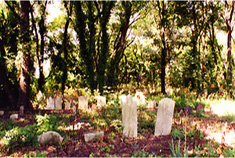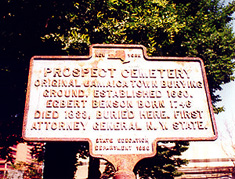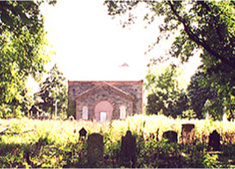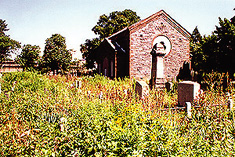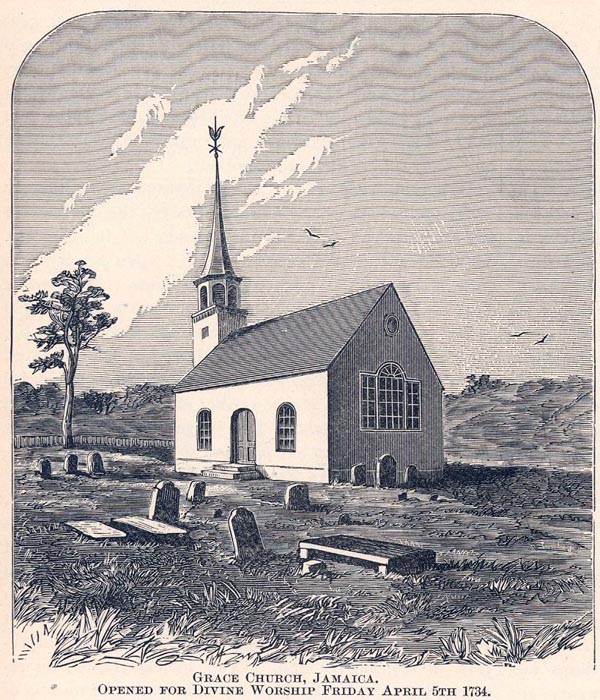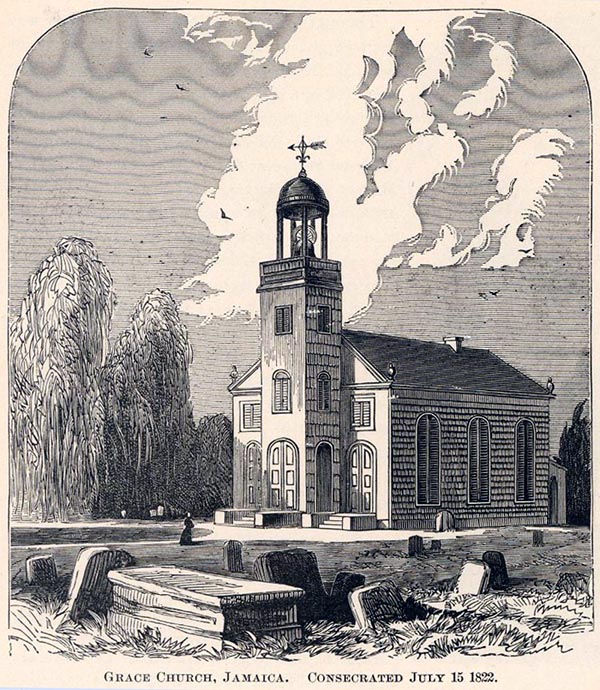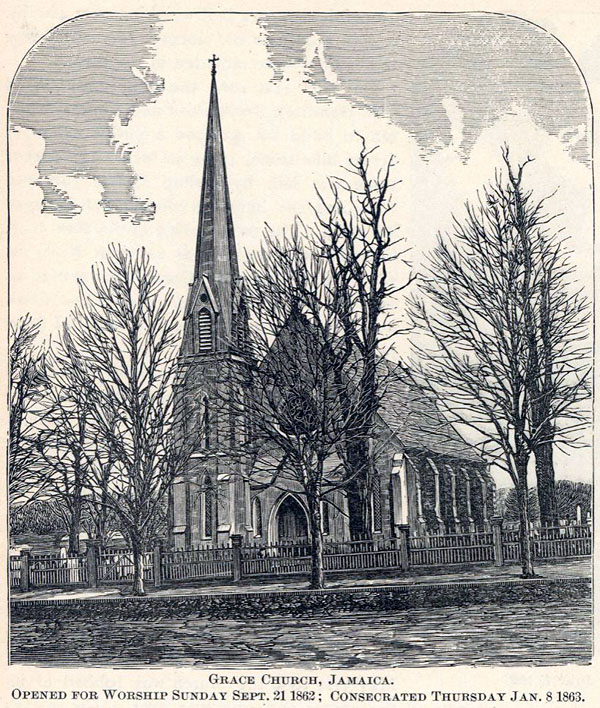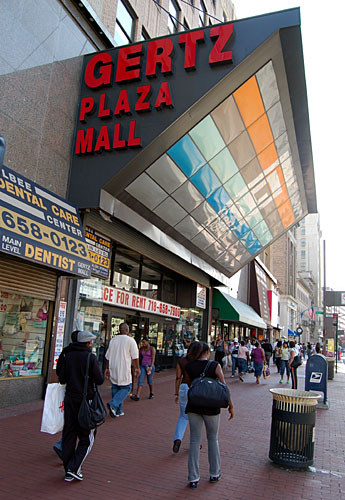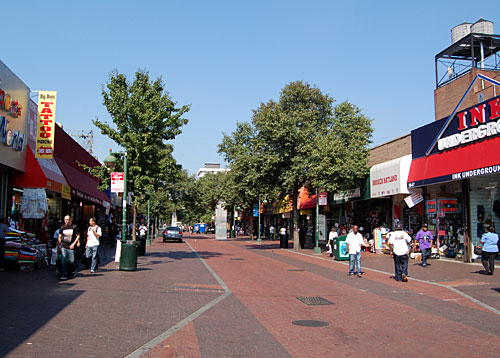Views
Contents |
Historical Landmarks
THE PROSPECT CEMETERY
Pictures[1]
Historical Overview
The Prospect Cemetery is the oldest cemetery located in Jamaica, and even in the entire borough of Queens. It is documented to be around since November 1668.[1] The cemetery was first known as the Presbyterian burial ground, and the church was said to own it. However, disputes between the state and the church as well as disputes within the different churches themselves, made it hard to actually know whom the cemetery belonged to. It’s not until the Prospect Cemetery Association of Jamaica Village, Inc. came to be in 1879, that the cemetery was actually owned by one entity, though it wasn’t until some time after their foundation. The Association resulted in the named Prospect to be first introduced, and thus giving the current name to the cemetery.[1] Over the years, the cemetery went through minor changes like the addiction of acres in 1856, addition of newer graves, and the renovation of the chapel. Although the cemetery is centuries old, it still is of great importance to Jamaica, because within its boundaries, it tells of the history of Jamaica, and the people who are buried there as a result of the different wars and epidemics which occurred within the area, over the years.
THE KING MANOR MUSEUM
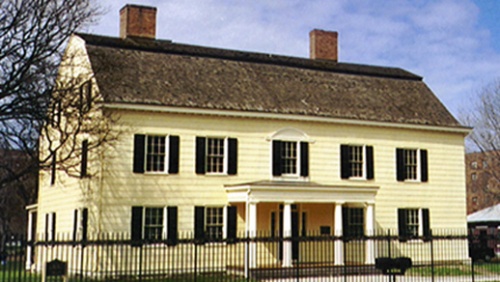
| King Manor [2] |
|---|
Historical Overview
The King Manor used to be the home to the Rufus King, a Massachusetts delegate of the Constitutional Convention.[1] King purchased the Manor in 1805. The manor was constructed in eh middle of the 19th century. When King got a hold of it, he changed the farmhouse,[1] by planting new types of plants and trees, that are still alive today, and he added a section on the eastern side of King Manor. The King Manor did not only change when Rufus King had ownership, but it also changed when his son, John Alsop King, took a hold of it, after his death. After the son’s death, Cornelia King took ownership until her death, when later the village of Jamaica bought the manor in 1896.[1] Two years later, the King Manor came to be under the power of the Parks Department. The King Manor now operates as a museum and park, and thus it is known now as the King Manor Museum and Park.
Photo Gallery[3]
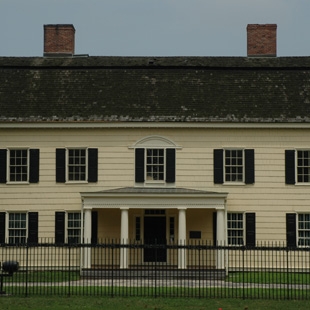


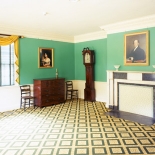
The Grace Episcopal Church

| Grace Episcopal Church [4] |
|---|
Historical Overview
The Grace Episcopal Church has been in Jamaica since the year 1702. Throughout the years, the church has been built anew various times. The first “new church” or the second church, was named Grace Church and was opened on April 5, 1734, and was the official church of the British colonial government.[1] The church was made into a third one on May 21, 1861 and consecrated on January 8, 1863.[1] Various benefactors of the church, including the delegate mentioned before, Rufus King, as well as members of his family, made all these renewals possible. It is also within the church’s graveyard, where Rufus King is buried.
The Grace Episcopal Church Over Time[1]
Jamaica Avenue
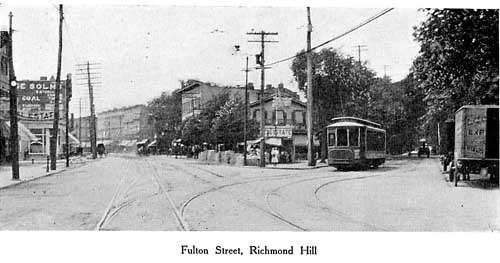
| Jamaica Avenue[1] |
|---|
Historical Overview
Jamaica Avenue is most likely the most popular street in Jamaica. People known it as a center for shopping. Yet it wasn't always known as such.
Even before all the developments occurred, Jamaica Avenue was documented to be an Indian trail. When the first settlers came to the area, the settlers made the trail wider and named it the Ferry Road,[1] which connected Jamaica with the ferry located in Brooklyn. As new laws and acts came to be over the years, Jamaica Avenue changed form a trail to a road to a main street. Today, Jamaica Avenue is still a major road for travelers and a section of the avenue consists of many stores, and thus it is a place where people come to shop.
Photo Gallery[5]
References
- ↑ 1.00 1.01 1.02 1.03 1.04 1.05 1.06 1.07 1.08 1.09 1.10 Prospect Cemetery Association, “Prospect Cemetery History,” 26 July, 2004, 18 Apr. 2009 <http://www.prospectcemeteryassociation.org/History.html>
- ↑ <"King Manor Museum." <http://www.kingmanor.org/Home.asp>
- ↑ "King Manor Museum." The Historic House Trust. <http://www.historichousetrust.org/item.php?i_id=17#>
- ↑ “Grace Church(Episcopal).” <http://www.nycago.org/Organs/Qns/img/GraceEpisJamaicaExt.jpg>
- ↑ "Photos of Jamaica, Queens." About.com:Queens, NY. <http://queens.about.com/od/photogalleries/ig/Photos-of-Jamaica--Queens/>
